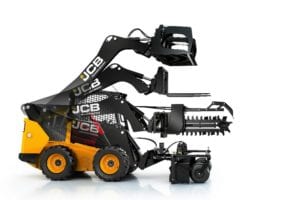Cheapest Skid Steer Loaders | Compare Options
Depending on your needs, Skid Steer loaders can be rented for as little as $50 per hour, $155 per day, or $1,060 a month. If you were to purchase one, plan to invest $35,000 – $60,400. Here’s what you need to know.
Are you looking for a skid steer for sale or rental? You need to know the skid steer loader prices to make the most informed decision.
If you’re in the market for a skid steer loader, you want the most bang for your buck. You’re in the right place to find skid steer rental and sales loader prices in 2020.
If you need to move earth or debris, a skid steer loader is your pal. Along with backhoe loaders, bulldozers, and boom lifts, skid steer loaders can help you cut big projects down to size.
Bobcat manufactures one of the most popular and reliable skid loaders around. However, there are many other brands available in the market. Here, we’ll talk about the top four.
Skid steer loaders are highly versatile. You can buy a range of attachments to make managing nearly any task imaginable much easier.
What’s the Best Skid Steer for Sale?
If you’re in the market for a skid steer loader, you probably have a lot of work to get done. Accordingly, size and lifting ability are essential features when considering this versatile piece of heavy equipment.
It’s relatively easy to tell which skid steer loaders are up to the task. Contractors vote with their dollars. The best skid steer loaders are the top-selling brands, and you’ll find out about them here.
 The S650 Bobcat skid steer loader is one of the most sought-after pieces of commercial equipment around. Like its peers on this list, contractors covet skid steers with a high lift and dump weight. With the S650, however, it’s 74-HP diesel engine is a big draw for landscaping and construction professionals.
The S650 Bobcat skid steer loader is one of the most sought-after pieces of commercial equipment around. Like its peers on this list, contractors covet skid steers with a high lift and dump weight. With the S650, however, it’s 74-HP diesel engine is a big draw for landscaping and construction professionals.
John Deere is another skid steer loader that performs at the top of its class. Contrary to today’s eco-friendly attitude, John Deere 332G fans still had the mindset that bigger is better. The earthmover just looks like it could get the job done.
The 332G is John Deere’s biggest skid steer. It has 3,150 pounds of operating capacity.
Yet another wildly popular earthmover is the caterpillar 262D. It’s been a top seller for years.
Its operating capacity comes in a little lower at 2,700 pounds. Nevertheless, it’s still capable of lifting most pallets. Also, compared to heavy equipment in its class, the 262D has significant hydraulic horsepower.
Rounding out this list is the Case Construction Equipment SV280. It features several best in class features, including best bucket breakout force, hydraulic flow, and torque. The Case SV280’s combination of premium specs makes it a surefire pick for this list.
How Much Does It Cost to Rent Skid Steer Loaders?
Heavy equipment has a hefty price tag. Not every company has money in the budget to purchase a skid steer loader outright.
has a hefty price tag. Not every company has money in the budget to purchase a skid steer loader outright.
Others simply cannot justify the purchase because they only need one occasionally. In either case, it makes more sense to lease or rent a skid steer loader in these situations. Leasing or renting enables you to take advantage of heavy equipment without incurring the costs of full-time ownership.
It’s important to note that leasing and renting are two different things. If you only need a skid steer loader for a one-off project, renting is probably a better option. If you have a project that’s going to run a year or more, however, you may want to consider a lease.
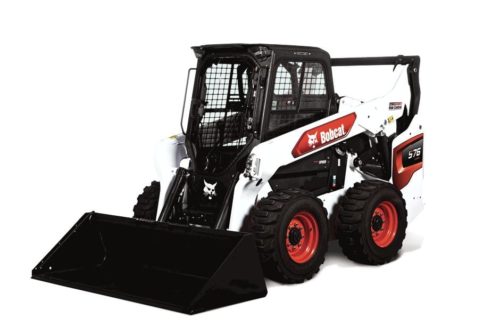 You should also know that rent and lease prices for skid steer loaders vary based on supplier, location, and equipment model. On average, a skid steer loader rental may cost:
You should also know that rent and lease prices for skid steer loaders vary based on supplier, location, and equipment model. On average, a skid steer loader rental may cost:
- $50 to $110 per hour
- $150 to $520 each day
- $600 to $1,200 every week
- $1,000 to $3,350 per month
These prices do not include the cost of attachments, which will increase the rental fee.
If you’re going to lease, you need to consider variables such as the price of the skid steer loader and the length of the agreement. On average, a lease for a $25,000 skid steer may cost:
- $2,000 to $2,500 per month for 12 months
- $1,000 to $1,500 per month for 24 months
- $700 to $960 per month for 36 months
- $600 to $700 per month for 48 months
Lease prices will vary based on your credit score, supplier, location, and equipment model.
How Much Does It Cost to Rent / Buy a Bobcat Skid Steer Loader?
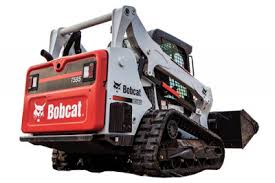 It makes sense that Bobcat’s offering is highly popular among contractors. The company designed it using the input of many of its owners.
It makes sense that Bobcat’s offering is highly popular among contractors. The company designed it using the input of many of its owners.
Often, Bobcat owners make use of heavy equipment attachments such as hydraulic hammers. Across many industries, skid steer loader owners said that they wanted improved visibility, increase productivity, and simpler customer service.
A brand spanking new Bobcat skid steer loader starts at around $20,000. Larger models may cost up to $60,000.
However, you can purchase a used one to save some coin. For example, the 1995 Bobcat 753G is no longer in production.
Nevertheless, it features a 1,300-pound low capacity. If you can find one, you can pick it up for $7,500.
A 2011 Bobcat S185 has a 1,850-pound operating capacity. If you were to find one with around 300 hours on it, you could pick it up for $21,000 to $24,000.
You can also save money by leasing a Bobcat. As an example, if you lease a 2018 MT85 Bobcat skid steer loader valued at $26,950, your lease will cost around:
- $2,000 to $2,530 per month for 12 months
- $1,300 to $1,359 per month for 24 months
- $915 to $965 per month for 36 months
- $720 to $755 per month for 48 months
Of course, if you’re doing a one-off or small project, you’ll want to consider renting a skid steer loader. On average, Bobcat skid steer rentals cost:
- $50 to $100 per hour
- $150 to $500 per day plus $25 to $67 a day for attachments
- $450 to $1,280 per week plus $150 to $532 each week for attachments
- $1,000 to $4,100 per month plus $350 to $1,350 monthly for attachments
With all these options, you’re bound to find a Bobcat steer skid loader to fit your needs no matter what size of your outfit.
How Much Does It Cost to Rent / Buy a John Deere Skid Steer Loader?
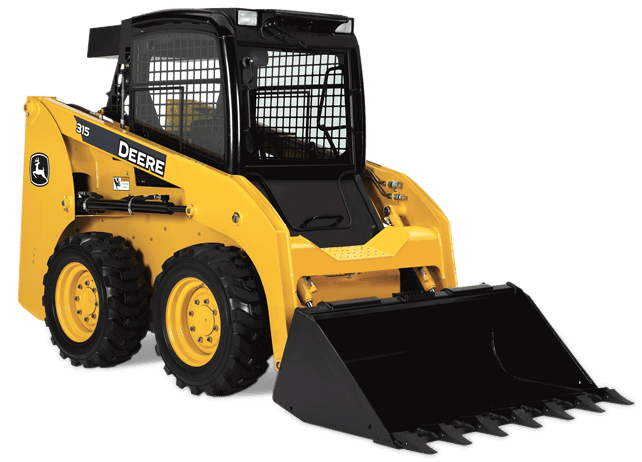 The cost to buy a John Deere skid steer loader varies greatly depending on the model, supplier, and location. As an example, a new John Deere 313 has many enticing features.
The cost to buy a John Deere skid steer loader varies greatly depending on the model, supplier, and location. As an example, a new John Deere 313 has many enticing features.
It has an operating weight of 5,150 pounds and an operating capacity of 1,260 pounds. Also, it kicks out 45 HP and comes with a 17 and a half gallon fuel tank.
A new John Deere 313 may set you back $15,000 to $25,000. If you choose to go the used route, prices vary.
For example, a 2012 John Deere 328D with 800 hours of runtime may cost between $35,000 and $45,000. The 2013 John Deere 328E features two speeds and a reverse fan. You can have the side skid loader for around $40,000 to $50,000.
You can also opt for a 2014 John Deere 328E with auxiliary hydraulics, a 70-inch bucket, and ride control. If you can find one with a mere 20 hours on it, you might pay between $55,000 and $65,700 as its most likely in like-new condition.
A 2015 John Deere 320E comes with a 70 HP diesel engine and a 3.3-liter fuel tank. It has a lift capacity of 2,000 pounds and may cost you between $40,100 and $50,250 as well.
A slightly used John Deere 332F features 100 HP and an operating weight of a whopping 9,610 pounds. It also has an operating capacity of 3,200 pounds and a 22 and a half gallon fuel tank. The 332F may cost you anywhere from $50,000 to $70,000.
The 2017 John Deere 333G boasts a compact track loader and riot control. If you locate one with 50 operating hours, it may cost between $70,000 and $80,000.
Alternatively, you may choose to rent a John Deere skid steer loader. For the John Deere 313D, rental may cost:
- $220 per day
- $915 per week
- $2,607 per month
Prices for rentals will also vary by model, location, and dealer.
How Much Does It Cost to Rent / Buy a Caterpillar Skid Steer Loader?
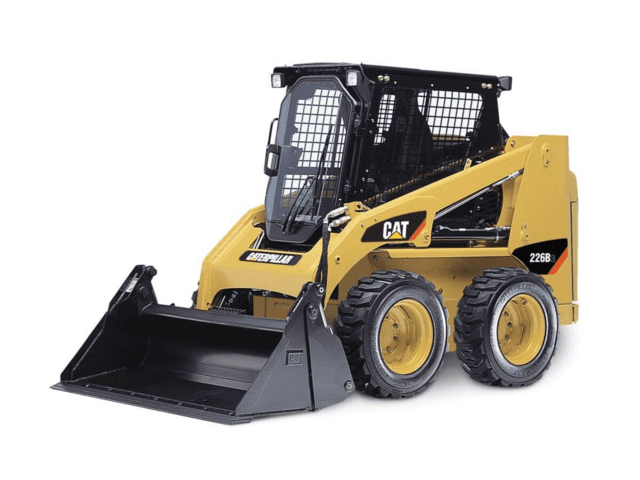 Caterpillar skid steer loaders are a great piece of equipment for contractors who want to increase productivity with hydraulic tools. Caterpillar makes use of the high flow XPS hydraulic system.
Caterpillar skid steer loaders are a great piece of equipment for contractors who want to increase productivity with hydraulic tools. Caterpillar makes use of the high flow XPS hydraulic system.
It offers a distinct advantage for contractors using, for example, a wheel saw or cold planer to mill asphalt or concrete. The XPS hydraulic system also works without diesel exhaust fluid, which makes it a popular choice for renters.
A Caterpillar skid steer loader with a weight capacity of 1,400 pounds to 2,000 pounds may cost between $15,000 and $30,0600. Once you go over 2,000 pounds, however, the cost may increase to $30,000 to $50,000.
The average life cycle of a skid steer loader is approximately 5,000 hours. This point is essential to know when you’re shopping for a used skid steer loader.
As an example, you might find a Caterpillar 226 with 1,000 working hours and a 1,500-pound capacity enticing. A used 226 may vary in price between $7,500 and $12,570. Meanwhile, a Caterpillar 246 with 1,000 working hours and a 2,000-pound load capacity may cost between $15,000 and $20,010.
If you also need attachments, you’ll have to buy them separately. Contractors frequently rent attachments, such as:
- Concrete breakers, which cost between $5,000 and $10,000
- Grapple rakes, which cost between $2,500 and $3,000
- Pavement saws, which cost between $10,000 and $20,000
- Snowblowers, which cost between $50,000 and $10,000
You might also consider renting a Caterpillar skid steer loader. On average, a rental may cost:
- $340 per day
- $1,160 per week
- $3,200 per month
These rental prices do not include the cost of attachments.
How Much Does It Cost to Rent / Buy a Case Skid Steer Loader?
 Contractors choose the Case skid steer loader for a range of applications, including agriculture, residential construction, materials handling, and landscaping. In relatively recent years, a growing number of snow removal contractors have decided to choose the Case skid steer loader.
Contractors choose the Case skid steer loader for a range of applications, including agriculture, residential construction, materials handling, and landscaping. In relatively recent years, a growing number of snow removal contractors have decided to choose the Case skid steer loader.
With the introduction of the Case SV280, the manufacturer entered new territory. Now, it’s a popular choice for contractors who want a skid steer loader that puts out less than 74 HP. Often, contractors will use the case skid steer loader with attachments such as rakes, pallet forks, snowplows, and snowblowers.
The price for a new Case SV280 skid steer loader may start at around $27,000. Meanwhile, the price for the higher-end Case SR160 may start at about $35,000.
The Case SR 175 is an even more powerful option. It features 153 foot-pounds of torque and 67 HP. Prices for this skid steer loader may start at around $40,000.
The Case SR210 skid steer loader comes with a quick coupler feature, allowing you to change attachments without leaving the cabin. A new SR210 may cost around $40,000 or more, while a used one might start in the $23,000 range.
Case built the SR240 to take a ton of punishment. You can run it all day without the need to refuel, with its 25 and a half gallon tank.
A new SR240 may cost $60,000 or more. A used Case SR 240, however, may start at around $35,300.
It’s tough to find a Case skid steer loader to rent by the day or the week, however, they’re out there. If you do find one for rent, you’ll most likely have to lease it for the month. The monthly rental cost for a 2017 Case is approximately $3,256 per month.
What Is the Cost for Annual Maintenance for a Skid Steer Loader?
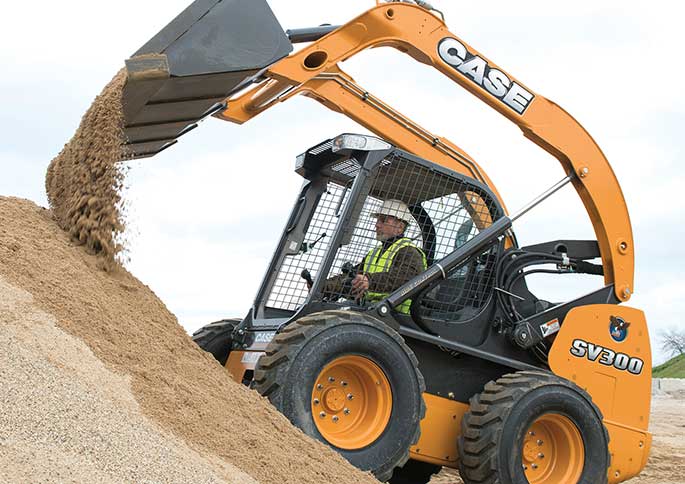 No matter how you get your hands on a skid steer loader, you must also consider operating costs. On average, contractors operate skid steer loaders for about 750 hours per year.
No matter how you get your hands on a skid steer loader, you must also consider operating costs. On average, contractors operate skid steer loaders for about 750 hours per year.
Rubber tracks on a skid steer loader may last from 12,000 to 16,000 hours. If you typically use your equipment on concrete, however, you can cut that time down to 700 to 900 hours.
Alternatively, you may own a landscaping company. If this is the case, you most likely use your skid steer loader on soft terrain.
In this case, the tracks may last longer or about 1,600 to 2,000 hours. The work environment will affect the life of your tracks significantly.
Your work environment can also affect your skid steer loader in different ways. For example, if you typically use it in the sand, the tracks may last longer. However, the sprockets and other moving metal parts may wear out sooner because sand acts as an abrasive on those parts.
Imagine that you purchase or rent a Bobcat T190 skid steer loader. In that case, new narrow width tracks may cost around $2,800, while wide with tracks may cost closer to $3,600.
Meanwhile, it may cost you $800 every time that you need to replace a sprocket. A skid steer loader bucket typically lasts for the entire lifetime of the machine. However, you’ll most likely need a new cutting edge each season, which costs around $300.
Are You Gearing up for Your Next Heavy Equipment Buy? Stay in the Know!
If you’re in the market for a skid steer for sale, it’s essential to make the most of your investment, whether you rent, buy, or lease. By knowing the prices for different skid steer loaders, you can make sure that you’re getting the most value for your money.
Visit the CheapMeNow.com transportation section to find prices for more heavy equipment for your construction company.
Find Skid Steer Loaders Near You and Compare the Lowest Price Quotes – Get Started Below
You may also be interested in:
Lowest Prices on Mini Excavators
5 Best Skid Steer Loaders
The following were among the top 5 skid steer loaders, frequently preferred for their performance, reliability, and versatility. It’s important to note that newer models may have been released since then, and industry rankings might have changed based on innovation and customer feedback. However, these machines have historically been recognized for their quality:
-
Bobcat S650:
- Description: Bobcat is almost synonymous with skid steers due to its long history in the industry. The S650 is a vertical lift path loader that combines power, lift, and comfort. It has a rated operating capacity, which means the weight it’s certified to safely lift, of around 2,690 lbs. Its cab-forward design enhances operator visibility and makes it easier to see the attachment.
-
Caterpillar 262D3:
- Description: Caterpillar is well-known in construction equipment, and its skid steers are no exception. The 262D3 boasts advanced display options, high-flow hydraulic systems, and superior lift and carrying capacities. It’s known for its rugged build, and can be equipped with a variety of tools and attachments.
-
John Deere 332G:
- Description: John Deere is another strong contender in the heavy machinery industry. The 332G is their largest skid steer model. It has high lift capacities, spacious and comfortable cabs, and boasts an advanced electro-hydraulic system that allows for optimal machine performance and smooth operability.
-
Kubota SVL95-2s:
- Description: While Kubota is sometimes more associated with tractors, they’ve made significant inroads into the skid steer market. The SVL95-2s is a compact track loader known for its high performance, comfortable cabin, and reliable hydraulic system. It is equipped with a 96.4 HP engine and offers impressive breakout force.
-
CASE SV280:
- Description: CASE has a rich history of producing reliable construction equipment. The SV280 offers strength and comfort, with a rated operating capacity of 2,800 lbs. Its vertical lift design provides optimal reach at the mid-point and full height, making it great for loading and lifting tasks.
When considering a skid steer loader, it’s essential to assess your unique needs, including the types of jobs you’ll be handling, the terrain, lift capacity requirements, and your budget. It’s also a good idea to check for newer models or updates from these brands to ensure you’re getting the most up-to-date and efficient machinery.
Skid Steer Loader Buyer’s Guide – 14 Considerations
-
Size & Dimensions:
- Compact vs. Full-size: Determine the size of the skid steer you need. Compact models are suitable for smaller tasks and sites with limited space. Full-size models offer more power and capacity but are bulkier and need more room for maneuvering.
- Height & Width: Ensure the machine fits through gates, doorways, or tight job sites you may encounter.
-
Operating Capacity:
- This refers to the amount of weight the skid steer can safely lift. Make sure the loader meets or exceeds the requirements of your most demanding tasks.
-
Lift Type:
- Radial Lift: Best for digging, prying, and tasks at lower heights.
- Vertical Lift: Ideal for lifting and placing tasks, especially at mid-range or higher heights.
-
Engine Power:
- Measured in horsepower (HP), engine power often correlates with the machine’s size and capacity. While more power is often better, also consider fuel efficiency and emissions.
-
Hydraulic Flow:
- Standard Flow: Suitable for most general tasks and basic attachments.
- High Flow: Required for heavy-duty tasks and attachments that need more hydraulic power, such as mulchers or cold planers.
-
Tire or Track Selection:
- Tires: Best for hard surfaces and are generally less expensive to replace. However, they might not offer the best traction in muddy or sandy conditions.
- Tracks (Compact Track Loaders): Provide better traction in soft ground conditions like mud, sand, or snow. They also distribute weight more evenly, reducing ground disturbance.
-
Cabin Comfort & Visibility:
- Ergonomically designed cabins can reduce operator fatigue. Consider features like adjustable seats, air conditioning, and heater.
- Excellent visibility in all directions ensures safer and more efficient operations.
-
Attachments:
- Skid steers are versatile due to their range of available attachments. Ensure the machine’s compatibility with the tools you intend to use, such as buckets, augers, trenchers, or pallet forks.
-
Safety Features:
- Look for models that offer safety bars, backup alarms, side screens, and other safety enhancements. A well-designed cabin should provide good line-of-sight in all directions.
-
Ease of Maintenance:
- Easy access to engine compartments, regular service points, and clear maintenance instructions can save time and money in the long run.
-
Brand & Dealer Support:
- The reputation of the brand and the local dealer’s support (for service, parts, and warranty) can be crucial for long-term satisfaction.
-
Resale Value:
- Some brands and models retain value better than others. Consider this if you plan to upgrade or trade-in down the line.
-
Price & Financing Options:
- While initial cost is essential, consider the total cost of ownership, which includes fuel, maintenance, and potential repair costs.
- Check if the dealer offers favorable financing or lease terms if you’re not purchasing outright.
-
New vs. Used:
- New machines come with warranties and the latest features but are more expensive.
- Used machines can be a good deal, but thoroughly inspect for wear and tear, and be wary of machines with excessively high hours.
By considering the above points, you’ll be in a good position to select a skid steer loader that’s perfect for your needs. Always remember to conduct a hands-on inspection and ideally a test drive before finalizing your purchase.
